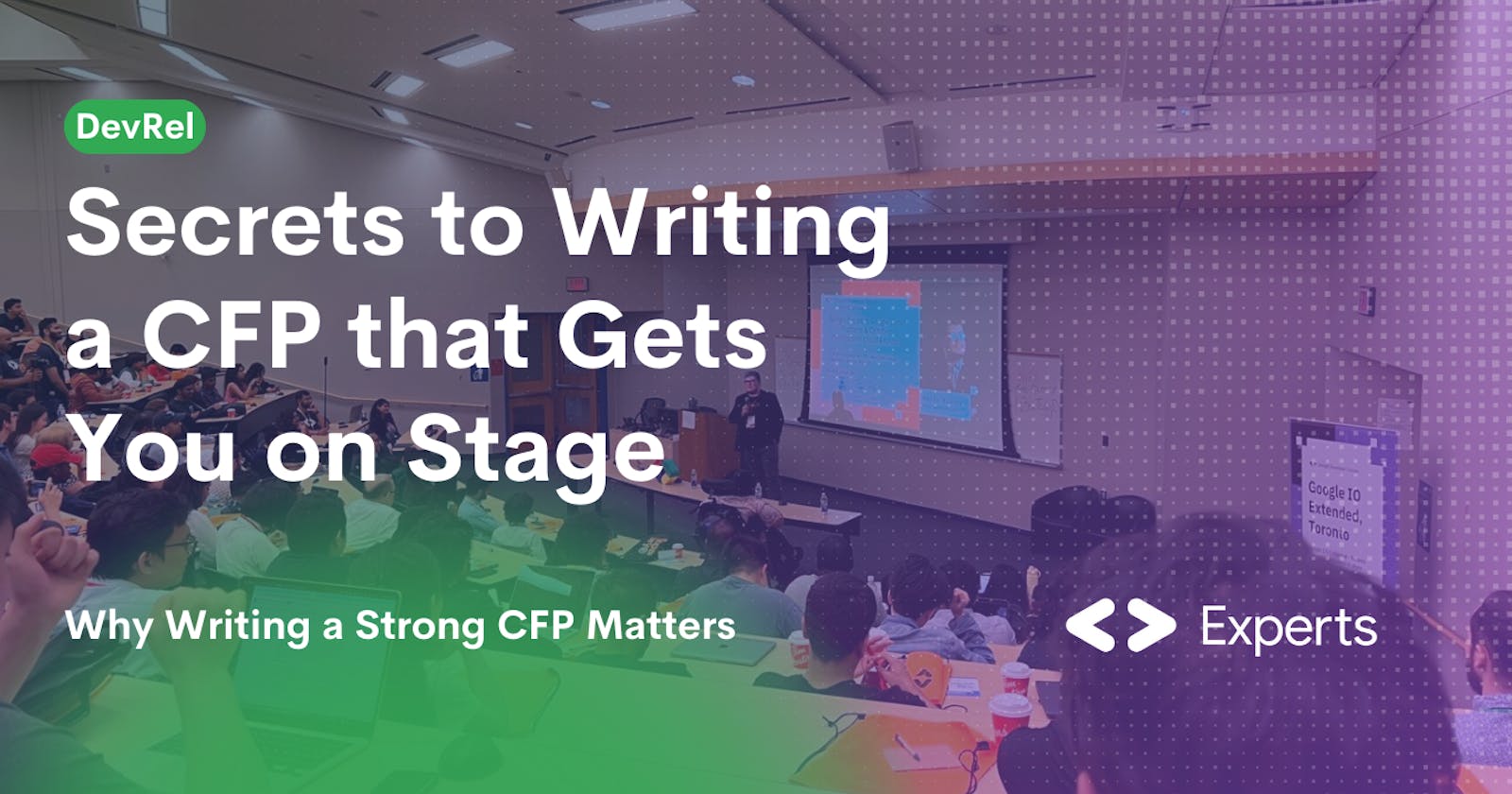Secrets to Writing a CFP that Gets You on Stage
Why Writing a Strong CFP Matters
Imagine it: your name in flashing lights above a bustling conference hall, a captivated audience hanging on your every word. That's the dream, right? But a crucial hurdle between you and that coveted keynote slot lies the Call for Papers (CFP). So, how do you turn your brilliant idea into a proposal that screams, "Pick me!"?
Fear not, fellow devrels, for I, Kevin Blanco, Google Developer Expert, and seasoned speaker-on-the-go, am here to share my hard-won secrets.
Nail the "Why They Care" Factor:
Forget flashy titles and self-promotional fluff. Your proposal's heart lies in addressing a concrete problem your audience faces. What keeps them up at night? What roadblocks are hindering their progress? Frame your talk as a beacon of hope, a guide to solving those very challenges. Remember, you're not just delivering content, you're delivering actionable takeaways.
Think Fresh, Think Unique:
Sure, everyone wants to talk about the latest tech buzzword (for example, AI). But how can you make your topic stand out from the crowd? Dig deeper, find a unique angle, and explore a niche within the niche. Offer a fresh perspective, a contrarian view, or even a touch of humor (but avoid cringe-worthy puns!). Remember, originality is key.
Be Prepared, Be Precise:
Don't wait until the deadline to scramble for information. Download the CFP questions beforehand, gather your data, and craft a compelling narrative. Choose your target audience wisely, and be specific about the learning level – are you catering to newbies or seasoned veterans? Clarity is crucial.
Craft a Title that Hooks, an Abstract that Seals the Deal:
Your title is your first impression, so make it count. Aim for succinct and descriptive, avoiding cheesy jargon and cryptic acronyms. Think "curiosity-piquing" rather than "snooze-fest." As for the abstract, use keywords strategically, highlight customer success stories, and throw in a jaw-dropping stat (with attribution, of course). Remember, you normally have around 150 words to paint a picture of brilliance, so make them count.
Session titles: From good to great examples
Before: SaaS solutions solving customer support's toughest challenges with Appsmith
After: Solve customer support's toughest challenges with Appsmith
Before: Lower your costs: Hear from experts about the top 10 cost optimization tricks they apply when using Low-Code.
After: Top 10 ways to lower your costs using Low-Code
Remember – It's All About Value:
Every detail in your CFP matters. Treat it as a mini-masterpiece, a testament to your expertise and passion. By putting yourself in the audience's shoes, focusing on actionable insights, and showcasing your unique voice, you'll craft a proposal that shines.
Elaborate on Your Experience and Credentials
Briefly highlight your background, expertise, or past speaking experience in the first paragraph of your proposal. This establishes credibility and shows you are qualified to present on the topic.
Get Feedback Before Submitting
Ask colleagues, friends, or past conference attendees to review your proposal. Get their perspective on whether your abstract is compelling and makes them want to attend your talk.
Share Unique Data or Case Studies
Include exciting data points, statistics, or customer success stories supporting your core message. This adds credibility and demonstrates real-world relevance.
Outline Clear Takeaways
Specifically, list 2-3 key takeaways or lessons attendees will learn from your presentation. This gives reviewers insight into the tangible value your session will provide.
Explain Why This Topic Matters
Briefly note 1-2 reasons why your topic is timely, relevant, or critical for your target audience. This shows reviewers you understand the current landscape and audience needs.
Be Specific About the Format
If proposing a panel, workshop, or interactive format, provide details about how you will structure the session and engage the audience.
Review Past Conference Agendas
Look at previous events' schedules to get ideas for inventive session titles and hot topics. This can help you brainstorm a creative spin for your proposal.
Follow Up After Submitting
Politely check on the status of your submission after the CFP deadline passes. Express your enthusiasm and reiterate your interest in presenting.
Let's review Winning Abstracts from Google Cloud Next ‘23
Title: Five (and a half) actions you can take to mitigate software supply chain threats
Abstract: According to Mandiant’s M-Trends 2022 report, 17% of all security breaches in 2021 started with a supply chain attack. In this session, we’ll explore threats that specifically target your software supply chain and offer five (and a half) actions that you can take to mitigate them. You’ll also learn how Commerzbank is using Google Cloud’s Assured Open Source Software (Assured OSS) to reduce their risk from open source dependencies.
Title: Tales of clouds compromised – real incidents, real learnings
Absctract: The rapid adoption of cloud technology has brought numerous benefits to businesses, but it has also introduced new risks and challenges to information security. In this session, we’ll explore various scenarios that can lead to the compromise of cloud environments and the impact that can have on an organization’s security posture. We’ll discuss both common and less-frequent attack vectors that occur in cloud environments. Finally, we’ll provide practical recommendations and best practices learned from real-world incidents that you can use to help minimize the risks of cloud-related security incidents.
Conclusion
Now, go forth and write proposals that get you noticed! Remember, a little preparation and a lot of passion can turn your CFP into a key that unlocks the door to your conference dreams.
SEE YOU ON THE STAGE!

